
How to get your NIE in Sitges, your TIE, or official documents you are likely to need as a foreigner resident in Spain
Certificado de Registro: This is a green residency card for EU and Swiss citizens which includes your NIE number but not a photo, so must be used in conjunction with EU ID cards or passports for identity purposes. It is essential for all EU/Swiss citizens who wish to remain more than 90 days in Spain. This is sometimes referred to as a ‘green NIE card’ as it has the NIE on it, but that is an incorrect definition, as the NIE is a separate concept, (as explained below), and also appears on the TIE.
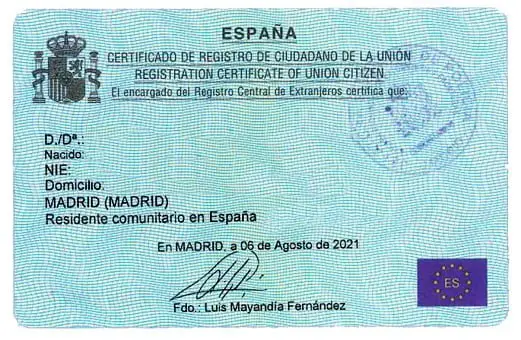
Getting a Cita Previa = Booking an appointment online. Most processes in Spain require you to go online to get an appointment if you want to, or have to, go in person rather than operating online. The processes for getting an appointment are explained for each document in its dedicated section, below.
For some processes (e.g. extranjeria) it’s extremely difficult to get an appointment. If you are determined to get an appointment for yourself, it is possible. There is a helpful tip on how to get your own appointment here (in Spanish). Alternatively, you can try using the services of a gestor, a lawyer, or one of the private businesses that has sprung up to help in these situations (see ‘Trades and Professional Services‘.)
For some processes, you will need to go in person. For many others, it’s a good idea to get the Clave or Certificado Digital (see below) so you can deal with government online, with no need for appointments or journeys.
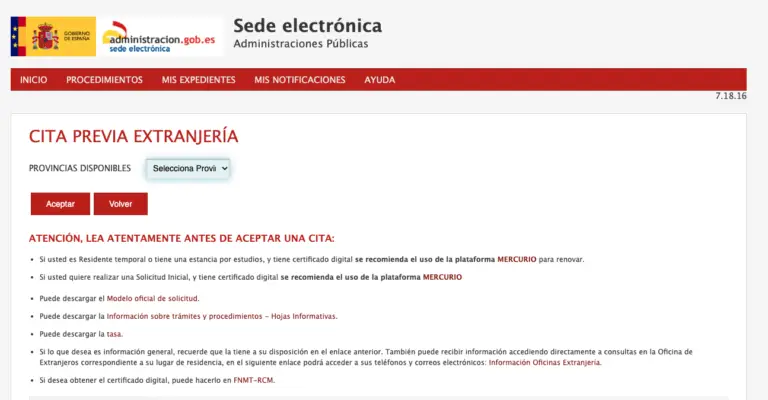
Certificado de empadronamiento: This is a proof of address and is needed in order to apply for a TIE or Certificado de Registro. You get it from the town hall where you reside, by showing your passport/EU ID card, and your rental contract (or deeds if you own the property you live in). See the process for Sitges in the dedicated section below.
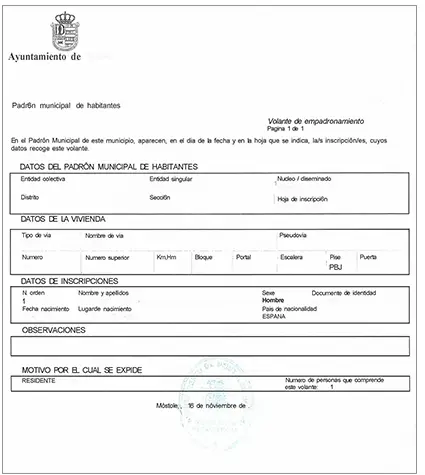
A certificate downloaded onto your computer which allows you to carry out many important processes with different government departments online, instead of wasting time trying to get an appointment, and then travelling to the department in question and waiting hours for your turn. There are several different types but the most useful is the Certificado Digital from the FNMT (the body responsible for money and stamps in Spain).
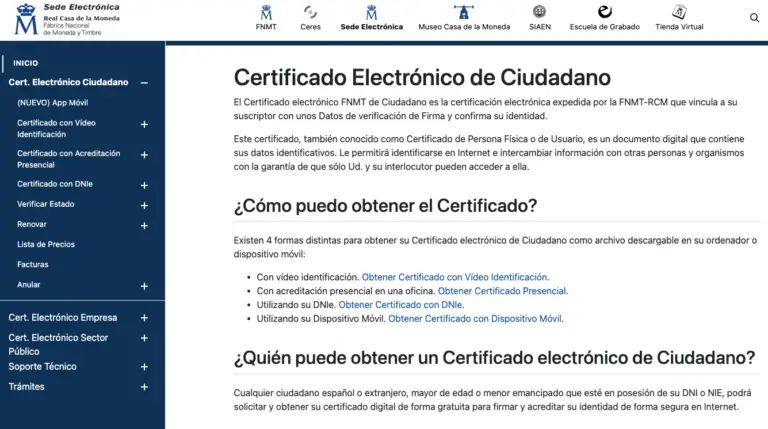
Non EU citizens, depending on their country of origin, can stay in the Schengen area (including Spain) for up to 90 days in any 180 day period, after which they must leave the area for 90 days (check our handy calculator here to help you work out your personal situation). For most non-EU citizens, stays of more than 90 days require a visa, a NIE; a certificado de empadronamiento and a TIE.
EU citizens do not require a visa for stays of longer than 90 days but do require a NIE; certificado de empadronamiento; and certificado de registro.
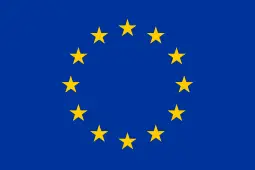
NIE (Número de Identificación de Extranjero): This is your fiscal identification number and doesn’t serve for any other type of identification. Neither does it imply residency or employment rights. You can get one even if you are not resident in Spain (eg if you have a property here and need to open a bank account). You may well need to get one before you decide to go for residency documents (TIE for non EU citizens or Certificado de Registro for EU or Swiss Citizens), in which case follow the instructions in the NIE section below. However, if you jump directly to the TIE or Certificado de Registro, you will be assigned a NIE automatically as part of this process
TIE: This is a photo ID for all non-EU citizens who have been given the right to reside in Spain for longer than 90 days at a time.
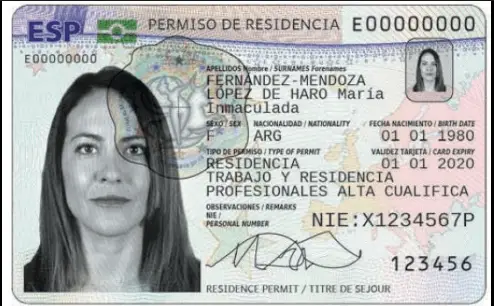
Residency for tax purposes
Residency for tax purposes isn’t necessarily linked to whether you have carried out any of the processes above. The tax office can deem you to be resident in Spain if any one of the following can be shown to apply to you:
If you are moving to Spain from overseas, remember that if you end up spending more than 183 days in Spain in your first year, you may be liable to pay tax on your income for the whole year, including that part which you spent in your former country.
An apostille is a certificate which the authorities in your home country attach to your document to confirm that it is genuine. Often, this is required by the Spanish authorities along with the official translation. You must refer to the authorities in your country for this process. For the UK, the following site has also been recommended in the community: https://www.hagueapostille.co.uk/
To open a Spanish bank account: By EU law, a bank account with any EU IBAN number should be sufficient for setting up direct debits in Spain (eg in order to get utilities, pay taxes, etc). In practice, however, many organisations in Spain will only accept a Spanish IBAN number. To get a Spanish resident bank account, you’ll generally need your NIE & passport or national ID card (EU citizens) or TIE and passport (non EU citizens) and, depending on the bank, proof of address (certificado de empadronamiento or utility bills from the last 3 months). For a non resident account, you will simply need your passport (or EU ID card). Some bank accounts (such as OpenBank or N26) can be opened online, with no need to visit a branch.
If you don’t yet have a NIE number or other documents, most banks will open a non-resident account for you and give you 90 days to provide the number/documents so it can be changed to a resident account.
To send money from abroad & receive it in your Spanish account: Always shop around as fees can vary greatly. Many people recommend using a service such as Wise or Revolut.
For bank accounts, our users have recommended the following recently:
For current accounts our members have recommended:
Others recommended include:
The Carnet Blau is offered to Sitges residents who meet one or more of the following requirements:
There are two types:
Carnet Blau +
This gets you free transport on municipal buses, as well as various discounts around town, including parking.
Carnet Blau S (Social).
For those whose family income is below a minimum established by the national government, this card offers all the benefits of the normal Carnet Blau plus some additional discounts in areas such as water bills and municipal taxes.
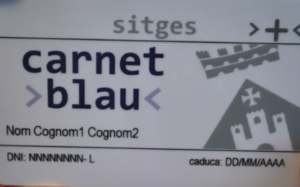
To get it, get an appointment here then go to the Oficina d’atenció Ciutadana at Carrer Nou, 12 (near la Fragata)
You will need:
In addition, depending on your situation, original i photocopy of the following:
As soon as you have a NIE number (just the number, not the TIE or certificado de registro) you can obtain a digital ID. Once you have done this, you will save many similar visits to other government departments.
What is it? See description in the section at the top of this page.
What can you use it for? A wide & growing range of official interactions, including getting a health card; claiming unemployment benefit; changing your driving licence; and many more processes with the town hall, social security, police, trafico (for vehicle processes) etc.
Which one to choose? The 3 main options you will see are Clave, Clave Permanente, and Certificado Digital (e-identifier). The Certificado Digital is the most highly recommended because it allows you to access all your data, make changes, and sign documents. It can be obtained online and, under the EU’s eIDAS legislation, can be used across the EU
How to get it? You can now get it online by using the services of certificadoelectronico.es. The service is free. Or, if you want a same day service, there is a nominal fee. You will need your ID (NIE/TIE and passport or EU ID) and a smartphone for a videocall, so your identity can be verified.
Before the arrival of certificadoelectronico.es, you had to carry out some of the process online and then have your ID verified in person. The process for this is below, in case you are unable to use certificadoelectronico.es:
Certificado Digital Old Process:
In Sitges this can be obtained without charge at the OAC (Oficina d’Atenció Ciutadana) which is located at c/. Nou, 12, Sitges (near La Fragata beach). You need to book an appointment first. Call: 93 811 48 04. or email oac@sitges.cat or book yourself an appointment online here (Select ‘Padro Municipal D’Habitants’ and then ‘Alta al Padro Municipal D’Habitants’). When you go to the office, you should take:
This is an official document that certifies your status as a large family and allows you to enjoy advantages from different institutions, entities and commercial establishments. Some of these (eg 50% off the ITP tax when buying property) can save you thousands of euros. An individual card is issued for each member.
The card is available in digital format on your mobile phone through My Wallet .
To get it you can apply online or in person.
If in person you will likely do it at the Oficina d’Afers Socials i Famílies de Vilanova i la Geltrú, Tel2: 938157159 You may have to get an appointment first by phoning 012 or online here (select Barcelona then scroll down to Vilanova)
Quick Summary: in most cases, if you are living in a household with 3 or more children under 21 (or under 26 in full time study) you submit the NIE number for each family member, along with birth certificates and cohabitation certificates (that you get from the OAC so long as you have all registered as ’empadronado’ in the same residence in Sitges) to get the card. There are many other possible variations though, so read the details below.
You can apply for the card if you have one of the following family situations:
Children must meet ONE of requirements 1, 2 or 3 below, and BOTH requirements 4 & 5
The document is valid until the date the eldest child turns 21 years old. From that moment on, if the conditions to obtain the title are maintained, renewals will be valid every two years, except in the following specific cases:
When one of the included members is fostered for a duration of more than one year: the validity ends when the fostering ends.
In the case of resident foreigners:
The validity ends when the residence permit expires.
If the permit renewal is being processed: validity of 6 months from your request.
If the granting of the title depends on income: annual validity (case of special category).
In case of families in a situation of separation or divorce: validity of up to 2 years.
You must attach a copy of these documents, unless otherwise indicated:
a) General documentation
NIE of family members, if the applicant objects to the Department of Social Rights consulting the data at the General Directorate of the Police.
Proof of relationship through:
1. For children common to the two applicants: copy of the family book (if it exists) or birth certificates of all sons or daughters.
2. For children not common to the two applicants: copy of the first page of the family book and the page on which the sons or daughters appear, or the birth certificate of each son or daughter.
3. Judgment, notarial act or administrative resolution of the adoption, if it is not registered in the family book.
4. Judicial resolution of guardianship, or administrative foster care resolution.
b) Specific documentation
Recognition of large family status
Children’s studies
The studies must be university education with its different cycles and modalities, higher-level vocational training, specialized education at a level equivalent to university or professional education in centers supported by public or private funds, or any other of a similar nature, or where they’re studying to obtain a job.
Living together
It is understood that a temporary separation of a period equal to or less than two years (due to studies, work, medical treatment, rehabilitation or other similar causes, including cases of force majeure, deprivation of freedom of the parent or children or internment in accordance with the regulations governing the criminal responsibility of minors) does not break the coexistence between the parent and the children, even if it is a consequence of a temporary transfer abroad.
Categories of large families
Compatibility with the Single Parent Family Certification
Families that at the same time have the right to recognition as a large family and as a single-parent family are issued each of the titles, which are compatible, although the benefits of the same class or nature are not cumulative, unless established otherwise.
Initial date of effect of the title
The benefits granted to large families will take effect from the submission of the application for recognition or renewal, provided that at that time they met the requirements and the administrative resolution issued is favourable
This should be obtained at an office of Extranjeria in the province where you are intending to reside, within 3 months of your entry into Spain. In practice, if you know you intend to stay more than 90 days, it’s a good idea to get started with the process as soon as possible. The nearest place to do it is in Vilanova, although you can do it anywhere in Barcelona province if you are planning on living in Sitges.
Getting an appointment.
This can be quite difficult as groups of people have been taking appointments and then forcing others to pay for them. If you like you can pay a gestor to get you one (see recommendations under trades and services). However, things have apparently been improving lately, and if you don’t mind being persistent here is the process (if you have no luck, try at exactly midnight when new appointments become available, and/or try other offices near Vilanova):
Once you have the appointment
At the appointment:
The most commonly requested is the Certificado por Delitos de Naturaleza Sexual which you will usually need to show before you can work with minors.
If you have a certificado digital or Clave you can get this online here (click on ‘tramitación online con Cl@ve‘, which is actually the link for people with certificado digital too!)
If you don’t have a digital ID you have to get an appointment (cita previa) online here (if your browser warns you the link is dangerous, go to advanced and then proceed) Select Territorial Barcelona and then Certificado por Delitos de Naturaleza Sexual…
When you go to your appointment you must take:
What do I need to do?
EU Citizens plus EEA (Iceland, Liechtenstein & Norway): If your driving licence from another EU country does not have an expiry date or is valid for 15 years or more, you must exchange it for a Spanish one after you have been resident for 2 years in Spain. In other cases, you must change it for a Spanish one when it expires. If you licence is lost or stolen, you can also request a Spanish one.
British Citizens: According to the withdrawal agreement, you can use your UK licence for 6 months from 16th March 2023 (if you are already in Spain) or for 6 months from your arrival in Spain, after which it must be exchanged for a Spanish one.
Citizens of Japan, Switzerland, Serbia, Algeria, Morrocco, and many Latin American countries can also exchange their driving licences for Spanish ones, sometimes under certain conditions. Read more here .
Citizens from all other countries, including Australia, Canada, South Africa, New Zealand and the US will need to apply for an International Driving Permit, which, if acquired, can be used in conjunction with their licence for 6 months. After this, they will need to take a Spanish driving test in order to obtain their Spanish driving licence.
Exchanging your licence (EU, EEA, UK, etc)
For EU, British and other citizens who are able to exchange their home licence for a Spanish one, the process is detailed in Spanish here and is as follows:
Getting a Spanish Licence (Citizens from countries with no exchange agreement)
To do this you will need to take a Spanish driving test, which involves a theoretical exam and a practical one. The theoretical test can be done in English (although poor translations can make this more difficult). There are also some English speaking driving instructors in the area to prepare you for the practical exam. However, the practical exam will be in Spanish, so you will need to learn enough to understand what instructions the examiner is giving you.
You may be asked to seek homologacion of your qualifications in order to get a specific job or take further qualifications in Spain. If you plan to work in a regulated profession in Spain (eg architect) you may need to seek reconocimento professional. If you just want to prove that you have a degree equivalent to a bachelor’s or master’s degree in Spain, you can apply for a declaración de equivalencia.
Reconocimiento Professional. If you have a certificado digital, you can do this online here You will need to pay a fee of around €170, and upload copies of degree and professional qualification certificates, along with academic transcripts, plus official translations of all these. Finally, you will need to upload proof you have the level Spanish language competence required by the profession you wish to practice in Spain.
Declaración de equivalencia. If you have a certificado digital, you can do this online here You will need to pay a fee of about €170, and upload a copy of your degree certificate and academic transcript, along with official translations of each.
The NIE number is just a fiscal number assigned to you. It is not the green residency card (certificado de registro) given to EU citizens or the TIE given to non-EU residents. However, both these documents will have the NIE written on them. Moreover, if you apply for either of these documents without first having applied for a NIE number, you will have your NIE number assigned to you automatically, as part of the process.
If you need a NIE number for any reason, prior to applying for a certificado de registro or a TIE (for example, if you are buying property in Spain but not planning to be resident here):
You can apply for just a NIE number from outside or inside Spain.
For those not yet in Spain
If you are outside Spain and have a Spanish embassy or consulate nearby, it may be a good idea to get your NIE before you come, as it will be helpful for opening a bank account, getting a certificado digital, and other processes. Learn about the process here.
Once inside Spain
EU citizens: the process for obtaining a NIE and certificado de residencia ought to be straightforward. In theory, you do the following:
However, in practice it is difficult to get an appointment. You can either persevere using the approach outlined here, or you can pay someone to help you (see ‘Gestors’ in our section on Trades/Professional Services).
For some processes, you may need an official translation and an apostille. For the official translation, you need a government registered translator. The following official translator has been recommended by our members
Merce (Traducción Juridica). Lives behind Oasis. Call: 938 947 273 or Whatsapp 617 503 078
All of these can be carried out in person through the Registro Civil in Sitges in Plaza Constitución, s/n, 08870 Sitges. They are open from 0900-1400 Monday to Friday. Call: 938940069.
Alternatively, if you have digital identification such as a Certificado Digital or Clave Pin, they can be carried out via the Ministry of Justice Website
Social Security Number
Note there is a numero de la seguridad social and a numero de afiliacion a la seguridad social. The first one can be applied for by anyone residing in Spain and is simply an identification number. The first one automatically becomes the second one once you are contributing to the system, or the dependant of someone who is, or if you have some other right to be part of the system (eg pregnant women or minors who are not dependants of a person with a right to social security).
If you have a contract of employment or are registered as self employed you should already have a SS number, in which case you can go directly to get your CatSalut card (see below).
If you need a social security number (just the ID number) for any other reason, you can get one online using a certificado digital, by going here and selecting ‘solicitar el numero de seguridad social’.
If you don’t yet have a certificado digital you can request a social security number by downloading and completing form TA-1, available here and then sending it via the enviar solicitud form available here (the page asks you to submit pictures of both sides of your Certificado de Registro or ‘green NIE’, however, elsewhere it’s stated that you can apply using your passport. As the system will only accept 2 uploads, you can try uploading your passport page twice instead!)
Health Card (CatSalut Card)
What is it? The card that entitles you to taxpayer funded health care in Spain. In Catalunya, it says ‘CatSalut’ on the front. You are entitled to one if you have a work contract or are self employed in Spain, or if you are a dependant of someone who does. You can also get one if you are pregnant or under 18 and are not a dependant of a person who is working.
How to get it. You must first get your certificado de empadronamiento and it must be less than 3 months old. You can apply get your card in person or online. In both cases the card will be sent to your home.
In person
This is done at the Centro de Asistencia Primaria (CAP) in Sitges (click link for location). Take your passport or EU ID card and your certificado de empadronamiento with you. You will need to fill out the request form they will give you when you get there.
Online
Go here and fill out your details. The system will check whether you have obtained your certificado de empadronamiento within the last 3 months
The TIE is the identity card for non EU nationals who have a visa or residency certificate which allows them to stay in Spain for more than 90 days, or more than 2 periods of 90 days in one year. If you intend to stay in Spain, it’s a good idea to start the process immediately, as it can take time. The process is as follows:
This can be quite difficult as groups of people have been taking appointments and then forcing others to pay for them. If you like you can pay a gestor to get you one (see recommendations under trades and services). However, things have apparently been improving lately, and if you don’t mind being persistent here is the process (if you have no luck, try at exactly midnight when new appointments become available, and/or try other offices near Vilanova):
Take:
Wait up to 45 days before you are called to come and get your card
Some of your visa options may be as follows (for guidance/overview purposes only. Please check with your nearest Spanish embassy or consulate for full details):
Note that some visas require you demonstrate sufficient funds to live on. This is normally expressed as a multiple of the IPREM, which is a euro amount set by Spanish authorities annually. In 2023, the monthly IPREM was €600, so if a visa requires you to have 4*IPREM per month, you needed €2,400. In addition, non-Spanish language documents will normally require an apostille and an official translation, and most visas require a medical certificate (stating they don’t suffer from any disease which could threaten public health), and a criminal records check (stating that they don’t have a criminal record in their home country).
The NLV (non lucrative visa) is for those with a pension or other form of income (meaning they don’t need to earn money in Spain). You must agree to reside principally in Spain and pay taxes here. You must prove you have private healthcare and a minimum income set by the Spanish authorities. In 2023 this was 4*IPREM plus 1*IPREM for each dependant. Check the link (in Spanish) or your nearest Spanish consulate/embassy for further details.
The Investor Visa is an option if you invest 500k in real estate or 1m into a bank deposit or 2m in shares in a Spanish company. Dependants can join you with this visa. You must also demonstrate you have enough funds to live on (4*IPREM plus 1*IPREM for each dependant in 2023) and that you have private healthcare
The visa for entrepreneurs is for those who want to start a business in Spain. It takes 1- 2 months to obtain. It’s valid for up to 3 years and you can extend it for a further 2 years. Dependants can join you with this visa. To qualify, your business must be considered of public interest in terms of job creation, impact on the local area and making a relevant contribution to technological or scientific innovation. This decision comes in the form of a report on your business project by the economic and commercial office of your local Spanish embassy/consulate or from the Spanish Directorate of International Trade and Investments. You must have enough funds to live on until your business can support you (according to your business plan) In 2023 this is 1*IPREM plus 50% of the IPREM for each dependant.
The self-employment visa This requires the submission of a plan for the establishment of the professional activity, including planned investment and return. You must also prove you have the appropriate accredited professional training and qualifications to set up the practice, and that you have the appropriate financial means to do so, and to live whilst doing so.
The employment visa is for those already sponsored by a company via a work contract. The company must prove that no one in the EU could do the job before they can sponsor you.
The student visa is for those enrolled in full time studies in Spain or in ertain other programmes such as official au-pair programmes. It requires proof of acceptance on an appropriate programme, plus proof of financial means. Financial means must be 1* IPREM for the student plus 75% of the IPREM for the first dependant and 50% of the IPREM for all other dependants. It also requires proof of medical insurance, a medical check and a criminal records check
The digital nomad visa allows you to continue to work for an employer or clients around the world whilst being resident in (and paying taxes in) Spain. It takes around 20 days to get and your dependants can join you, To qualify you must:
have a bachelor’s degree or at least 3 years of work experience
be able to work remotely while staying in Spain
For at least 3 months before coming to Spain, be employed by, or have a commercial relationship with, a company outside Spain which will provide 80% or more of your income
You can do additional work for a company in Spain so long as:
you maintain your professional relationship as an employee or contractor with a company outside of Spain that provides at least 80% of your income
you are a contractor (not employee) with the company in Spain
This comprises no more than 20% of your total professional activity
It costs about 40-70 euros to make a will in Spain, and the process is as follows:
The notaries listed on the website of the Sitges town hall are both located at unit 45, in the Oasis comercial centre:
Notaria Maria Pilar Cabanas mpcabanas@correonotarial.org call 938940609
Notaria Óscar Marcos Sánchez Ferreiro omsanchez@correonotarial.org call 938943762
Share this page:
The information presented on this site is intended as a guide & does not constitute legal advice. No responsibility is assumed for any consequences resulting from use of the site. Prices, links, processes & other details presented can change from time to time. If you notice anything that needs updating, contact us. Reviews and ratings are subjective and do not necessarily represent the views of this website. Affiliate links are used in some areas of this site. This means if you use one of these external services, we may receive a small commission to support our running costs. We choose our links carefully based on what will be of interest to our readers. Affiliate links do not add any costs for our readers & in some cases they provide discounts.
© 2024 sitges for everyone All rights reserved